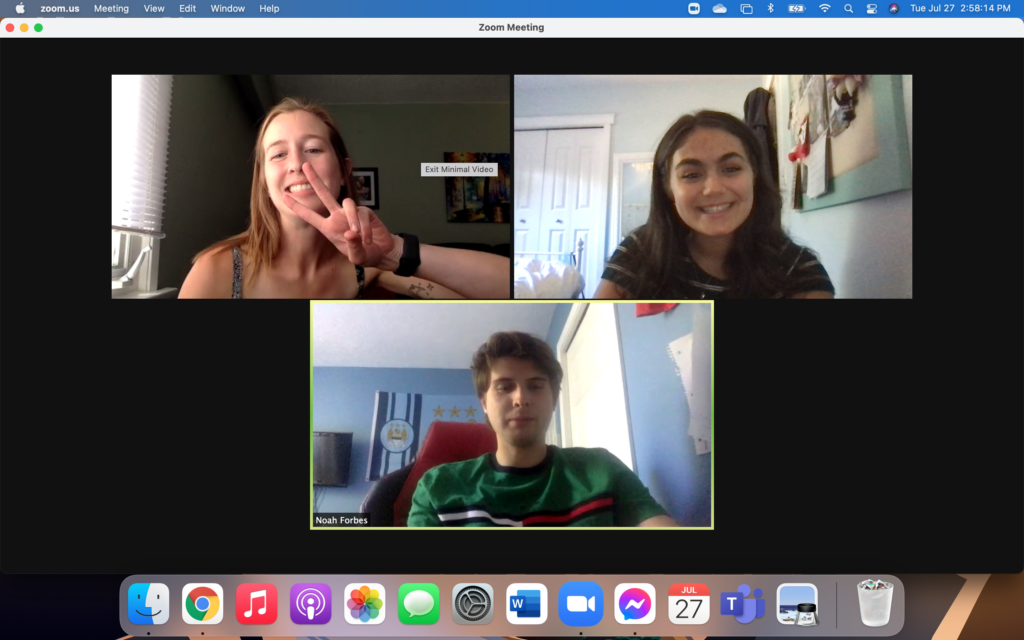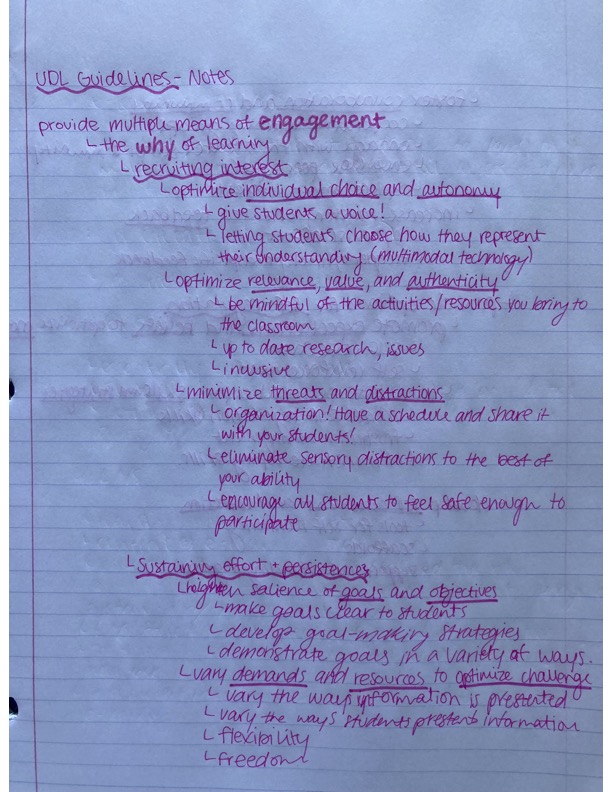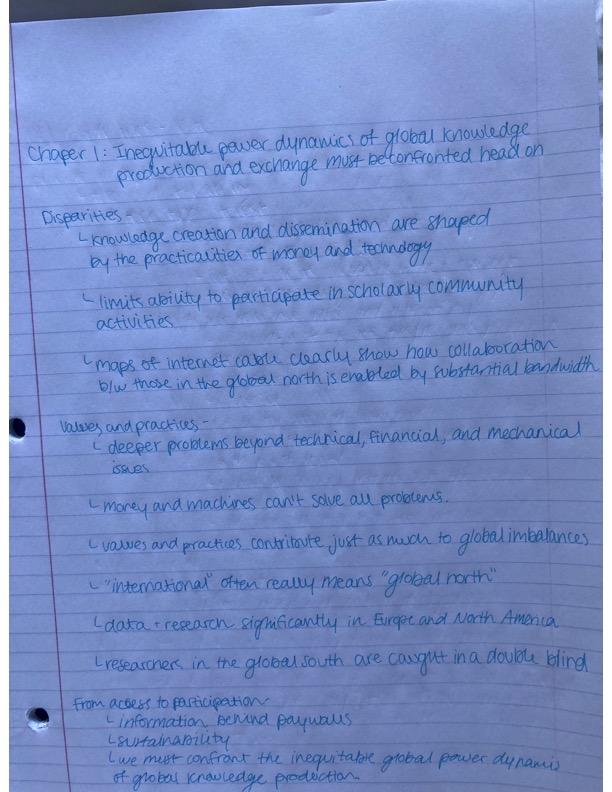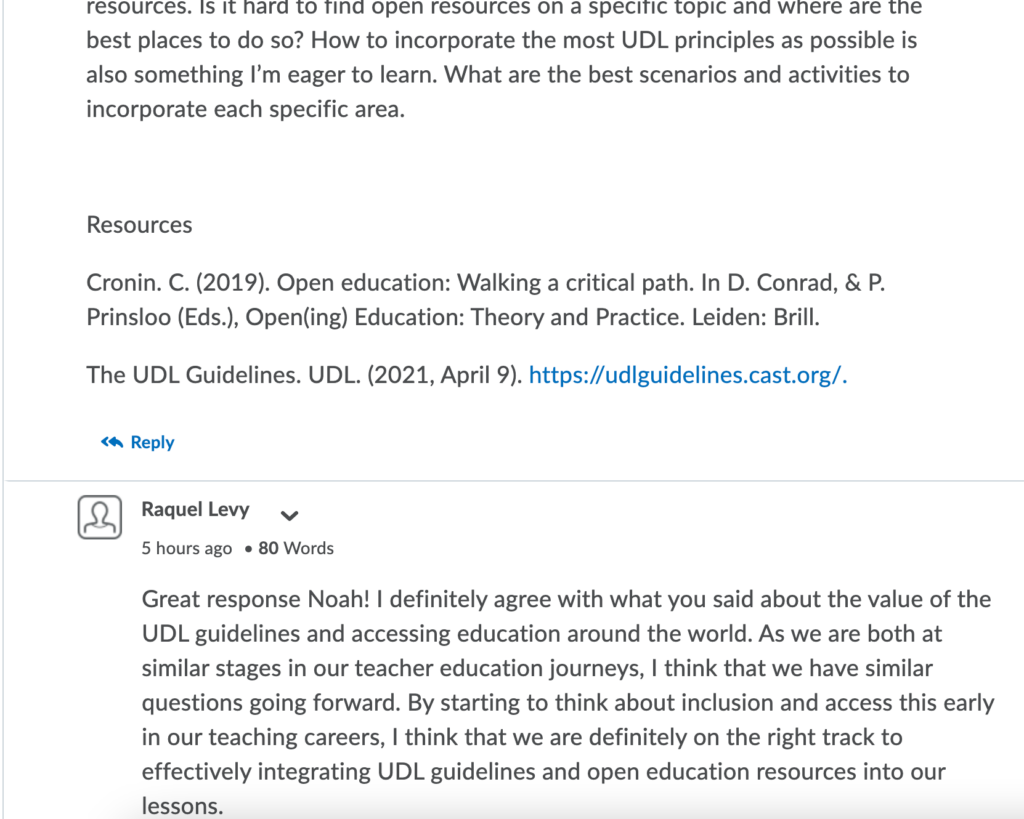



Individual Discussion Post:
Prompt – How can equitable access to authentic, meaningful & relevant learning environments for all learners be afforded to all learners in open and distributed learning contexts? What did you already know, what do you know now based on the course readings and activities, what do you hope to learn?
Coming into this course I definitely would have had a different response to this question. Before diving into different learning contexts and beginning to understand the variety of learning environments that exist in our digital world, I would have talked about educational equity in terms of physical ability, mental ability, sex, race, gender, and class. Throughout my teacher education journey up to this point, I had only considered breaking down barriers for my students who are already present in my classroom in front of me. The best tool that I have found to break down barriers for my students has been the UDL guidelines that I have now had the opportunity to revisit in the readings this week. I believe that these guidelines are a great resource for anyone involved in education as they present themselves in a simple format to check-in and reflect upon what sort of educational environments they find themselves in. The purpose of the guidelines are “to ensure that all learners can access and participate in meaningful, challenging learning opportunities” (CAST, 2018). I believe that any educator that takes the time to look through the guidelines and to critically think about the learning environment they create and what they can do to improve their own practice is certainly taking the right steps towards creating authentic, meaningful & relevant learning environments.
With that being said, UDL guidelines and breaking down barriers are great places to start in traditional classrooms but when it comes to open and distributed learning contexts there is far more to consider. No longer are we talking about inclusion based on individual factors, with open and distributed learning contexts the question of access becomes increasingly daunting. When deeming an educational resource “open” this implies that it is accessible to anyone without any legal, financial, or technical barriers, however, I think that we must consider how “[o]penness is contextual, but it is also personal and continually negotiated” (Cronin, 2017). Around the world, there is a large spectrum of “technical, financial, and even mechanical issues” that must be addressed before truly considering an open or distributed learning environment equitable (Czerniewicz, 2020). The lack of material resources not only question whether or not digital learning environments are accessible, but the global North also has extreme power over the research space and perpetuates biases that keep researchers and learners from the global south stuck facing steep barriers. Nevertheless, we must consider those learners that have personal barriers that need support beyond access to the education itself in these marginalized communities.
Looking forward, there is clearly plenty of room for growth and development when it comes to my understanding of what I need to do to help create equitable learning environments. When I access open resources in my future classrooms, it will be hard to do so considering how many learners will not have the same level of access to education that my students will have. However, this does not mean that I need to just sit and feel guilty about my privilege, I want to become an advocate for change in the education system and do all that I can to support learners all around the world. I plan to consider these issues beyond this course and explore the ways in which I can help to provide equitable, inclusive, and accessible education for all learners throughout my teaching career.
Resources:
CAST (2018). Universal Design for Learning Guidelines version 2.2. Retrieved from http://udlguidelines.cast.org
Cronin. C. (2019). Open education: Walking a critical path. In D. Conrad, & P. Prinsloo (Eds.), Open(ing) Education: Theory and Practice. Leiden: Brill. Open Access Version http://eprints.teachingandlearning.ie/4345/
Bali, B., Cronin, C., Czerniewicz, L., DeRosa, R. & Jhangiani, R. (2020) Open at the Margins. Rebus Community Pressbooks. Retrieved from: https://press.rebus.community/openatthemargins/
Inclusive Learning Design Handbook from OCAD University. https://handbook.floeproject.org/